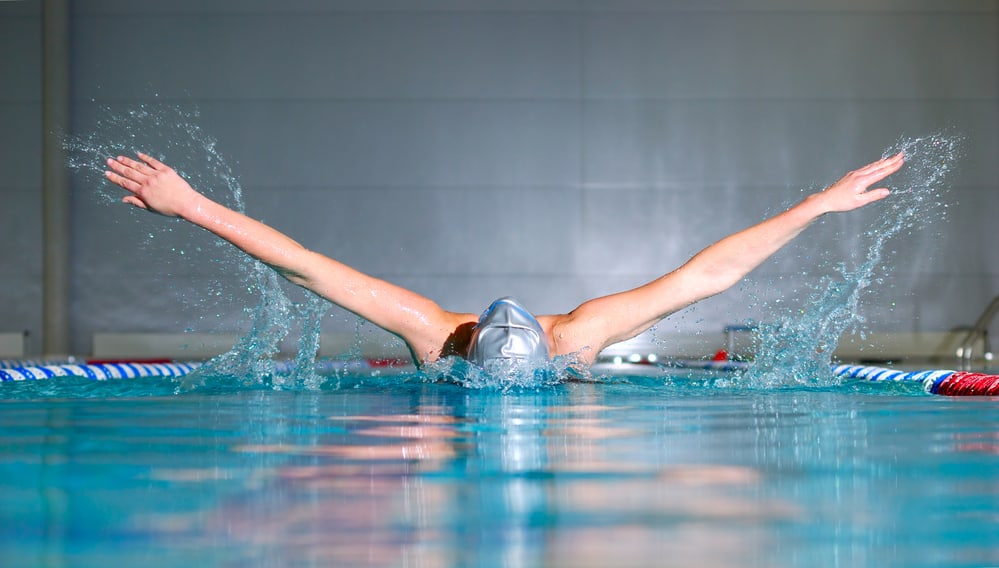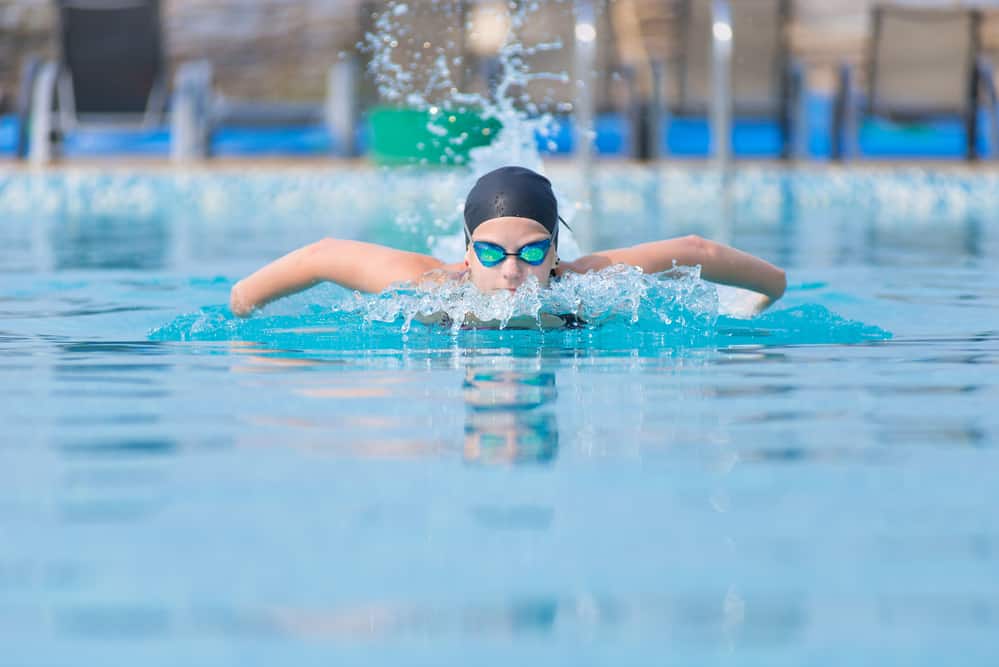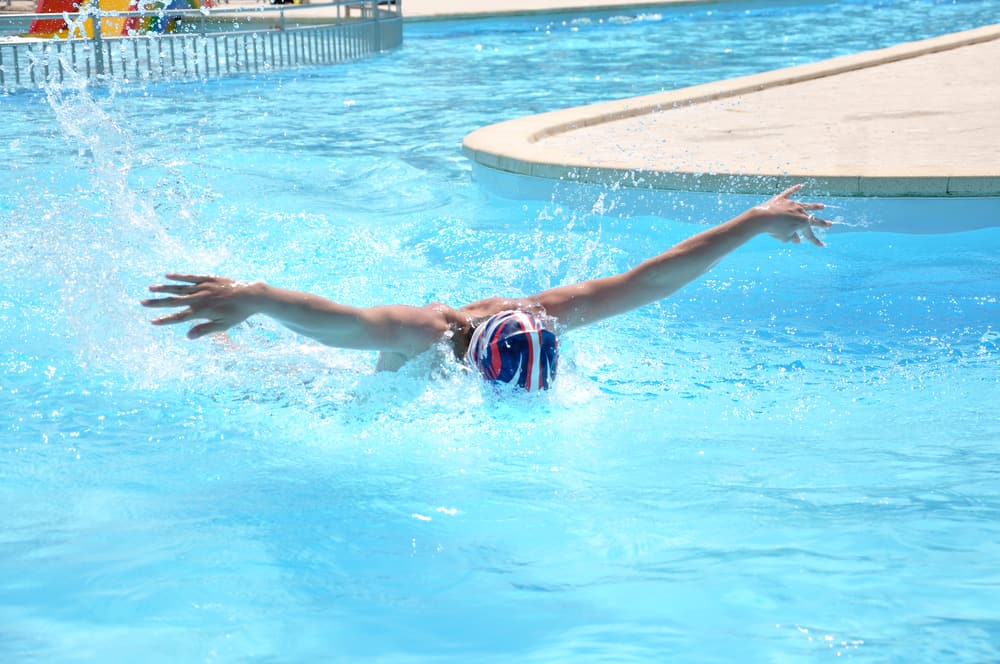Since it requires so much timing and coordination, the butterfly stroke is the most challenging stroke for beginners to master. The excellent power and speed can only be generated through a coordinated motion of the arms, legs, and hips. An inefficient movement can throw off the entire stroke in only one of these areas.
Additionally, the butterfly stroke is more potent than other strokes, so it can be challenging to control the movement and power at first. With practice, however, anyone can learn how to swim butterfly strokes correctly and effectively.

Table of Contents
The Challenges of Learning the Butterfly Stroke
For novice swimmers, the butterfly stroke can be particularly challenging to master. This is because it necessitates precise timing and coordination, which can be challenging. Moving the hips, legs, and arms in unison can generate the necessary power and speed.

One of the challenges of learning the butterfly stroke is that it requires a high level of coordination. The arms, legs, and hips need to move in sync to generate the correct power and speed. This can be difficult to master, especially for beginners.
Another challenge is that the butterfly stroke is a timing-sensitive stroke. All elements must come together at the right time to produce an efficient and powerful stroke. This can be difficult to achieve, especially for beginners who are still getting a feel for the timing and rhythm of the stroke.
Why the Butterfly Stroke Is So Difficult to Learn

Though it may seem easy to the untrained eye, the butterfly stroke is one of the most difficult to learn. This is because it requires a high degree of coordination and timing. Only by the synchronized movements of the arms, legs, and hips can it generate the appropriate amount of power and speed.
This can be especially difficult for beginners, who may not have mastered the coordination required to do this stroke correctly. It can take a lot of practice and patience to get it right, but with enough time and effort, just about anyone can learn how to do the butterfly stroke effectively. Hopefully, this article has shed some light on why the butterfly stroke can be so challenging to learn and has given you the motivation to keep trying if you’ve been struggling with it.
How to Overcome the Challenges of Learning the Butterfly Stroke
The butterfly stroke can be a challenging stroke to learn for beginners. Several common challenges come with learning this stroke, but with practice and patience, you can overcome them and perfect this rewarding stroke.

One of the biggest challenges in learning the butterfly stroke is getting comfortable with the motion of the arms and legs. The movement is very different from other strokes, so it takes some time to get used to it. In addition, the arms and legs need to move in sync, which can be challenging at first.
Another challenge that beginners often face is getting comfortable with the breathing pattern. This stroke involves taking deep breaths, and it can take some time to get used to inhaling and exhaling while swimming.
Finally, mastering the kick is one of the most challenging things about learning the butterfly stroke. This kick involves moving both legs together in a scissor-like motion, which can be challenging to do accurately at first.
What You Need to Know before Attempting the Butterfly Stroke
When it comes to swimming strokes, the butterfly stroke is often considered one of the most difficult to learn. This is because it is a more challenging stroke than the traditional front crawl or backstroke-requiring more power, coordination, and breath control. However, the butterfly stroke can offer many benefits, such as improved speed, endurance, and upper body strength once mastered.

If you are thinking of giving the butterfly stroke a try, here are some key points to keep in mind
- The history of the butterfly stroke. The butterfly stroke was first introduced in the early 1900s by an Olympic swimmer named Johnny Weissmuller. He developed the stroke to make it easier for him to cover greater distances in the water.
- Proper technique. Swimming the butterfly stroke requires keeping your body streamlined and moving through the water with as much power and speed as possible. You should also keep your head down and make sure to breathe regularly-taking a breath on each stroke cycle.
- The importance of breath control. One of the biggest challenges beginners face when learning the butterfly stroke is mastering breath control. This is because you need to be able to breathe in and out while keeping your head down and maintaining good technique.
- Common mistakes beginners make. Some common mistakes beginners make when learning the butterfly stroke include swimming too slowly, not staying streamlined, and not breathing regularly.
The Benefits of Learning the Butterfly Stroke
The butterfly stroke is a challenging but rewarding swimming stroke that can offer many benefits mastered.
Learning this stroke can offer several advantages, including
- improved speed and efficiency in the water
- greater range motion
- increased power and strength
- improved breath control
- lower heart rate
